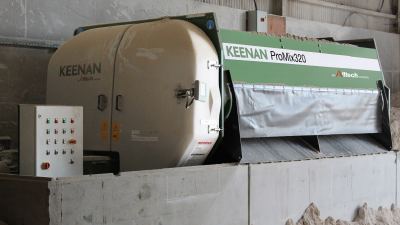Media & Events
Catching Autumn Grass Growth on the Bounce

In recent weeks, grass growth has been non-existent in certain areas, and with many second cuts having to be grazed off, this has left fodder supplies very short across the country. This shortage in feed will have to be filled in one form or the other through alternative feeds or forages.
The recent rainfall, which has alleviated the drought-like conditions, has resulted in more positive growth rates — but realistically, it will take up to three weeks before any substantial grazing covers of >1100 kg of dry matter (DM) per hectare (ha) are to be available. To allow grass covers to recover, it is vital to protect regrowth and allow tillers to establish. In many farms, rotation lengths have been pushed out to 35 days in order to achieve covers worthy of grazing. These grass plants have been under stress over the last number of weeks, resulting in a lot of seed head production, even at covers of 1100 kg DM. The actual value of grazing these paddocks is poor, as most of these plants never reached the three-leaf stage but, instead, grew a far higher stem-to-leaf ratio. As these dry grass plants receive rain, they now begin to decompose or “melt,” so grazing off these types of pastures should be a priority, as it will allow for fresh tillers to re-establish themselves.
Now that we have received substantial amounts of rainfall, it would be beneficial to spread nitrogen (N) across the grazing block. Grass can grow up to 30 kg DM/day in September for every unit of nitrogen applied. Spreading nitrogen with growth rates in the low 20 kg DM/day has little to no benefit, as the plant will not have the ability to uptake the nitrogen available.
To capitalise on a resurgence in grass growth, a plan must be put in place that includes a number of key points in order to get back grazing as soon as possible.
- Complete a farm walk to assess exactly where the farm is and the average farm cover. Ideally, farm covers should be 775 kg DM/ha, with a stocking rate of 2.5 livestock units per hectare.
- Use the grass wedge to allocate kilos of grass and maintain the cow’s diet dry matter intakes (DMI) requirements.
- Don’t follow a strict rotation and graze low covers (<600 kg DM/ha), as this will just stunt grass growth. Use sacrifice paddocks to feed out supplement while grass growth begins to establish and catches up to regular levels of 50-60 kg DM/ha.
- Use supplementary forage and concentrate to make up intake requirements of the cow. If buffer diets are reduced too quickly, this will slow down the recovery of the grazing rotation and milk solids production. The following table outlines levels of supplementation required:
| Grass intake
(kg/cow/day) |
Concentrate guidelines
(kg/litre) |
| <6 | 0.33 |
| 6-10 | 0.22 |
| >12 | 0.11 |
- To recover feed stocks for the winter, it is vital to make the most of the upswing in grass growth in the coming weeks. Closing off ground for second-cut silage and taking advantage of surplus paddocks will also be important management practices over the coming weeks.
Instead of increasing stocking rates to eat the surplus grass, let it build up. Maintaining a higher-than-normal level of supplement will also reduce the demand on the grazing block and the build-up of grass covers.
Since many areas of paddocks have been damaged due to being burnt and exposed, it will be important to look at reseeding options. Stitching in ryegrass now can help with the recovery of a badly damaged paddock. This is a cost-effective method for re-establishing damaged grass swards.
Key points:
- Grass growth curves will begin to show a positive return in the coming weeks.
- Assess the amount of grass currently available on farm.
- Set an average farm cover target to reach in three weeks.
- Apply nitrogen now for the best response as grass growth levels reach 30 kg DM/ha.
- Maintain buffer diets until grass covers recover to >1000 kg DM/ha.
- Adjust supplement based on the amount of grass that can be allocated. Use the grass wedge.
- Complete a feed budget to assess any shortages of feed for the coming winter and spring.
For further advice on grass management, measurement and feed budgeting, contact InTouch on 0599101320 or email contactintouch@alltech.com.

























